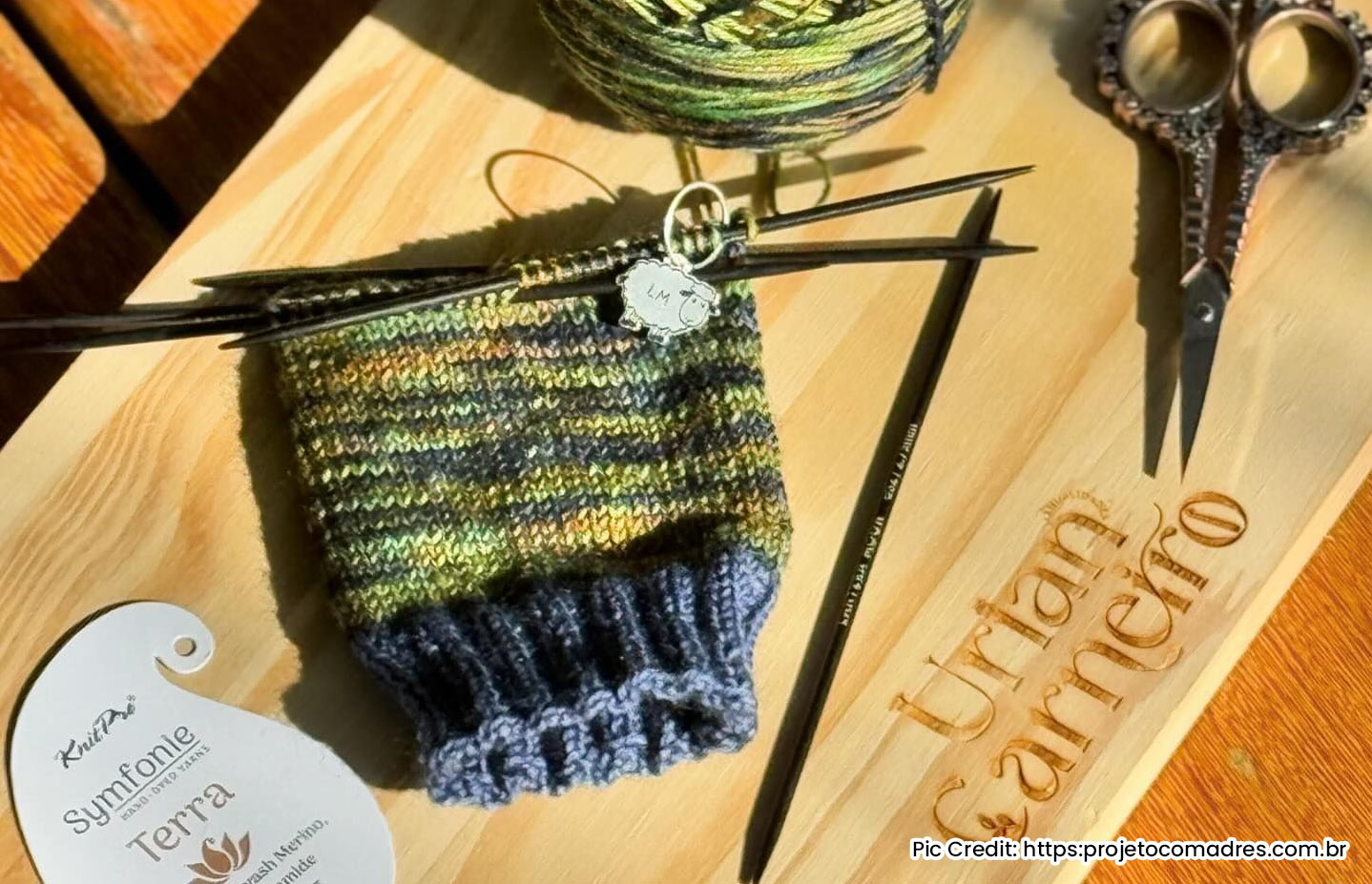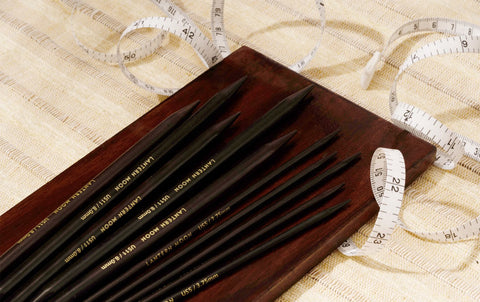
Do you love to knit in the round? Why would you not? It's a fantastic way to make seamless projects. All you need are your favorite knitting needles and work in continuous rounds. The projects turn out faster. Also, it eliminates the need for purl stitches in the stockinette pattern. And, above all, knitters find the process easy on their hands. Imagine those lovely hats, socks, garments, and home decor. Knitting in the round is blissful, but there's also another side. Whether you choose the double-pointed needles or the circulars, you might encounter a hurdle- ladders. Ladders are the curse of knitting in the round. They often disrupt your stitches, spoiling the look of your projects. Now, there are many tips that we've collected from experienced knitters to help you prevent ladders when knitting in the round, which we'll be sharing in this blog.
What are Ladders?
In knitting, ladders refer to the appearance of loose stitches or gaps between stitches. Ladders usually happen between the round's first and last stitch, where you join the round. This actually resembles a ladder. It can be a small, noticeable mistake or look like a column of dropped stitches over a few rounds. The common issue in circular knitting is that ladders can also be problematic when knitting on straight needles. Now, in the case of DPNs, the ladders are a little more common than handling circular knitting needles. Whether you are working in rounds or the magic loop technique or handling two circular needles.
Now, you must consider what causes ladders when knitting in the round. There are many reasons for the occurrence of ladders. Primarily, it is because of uneven tensions. And that mostly happens when you are switching from one double-pointed needle to the other. But this can also be due to slippery yarn, needle material, or when working complicated stitch patterns. The good news is that ladders are easily prevented. In fact, there is also a remedy even after you have completed the project.
How to Prevent Ladders when Knitting in the Round?
Uniform tension is the secret to neat knitting. When you have mastered yarn tension, you can ensure that each stitch is made with the same amount of yarn, which will further ensure that there are no tight or loose stitches. To prevent ladders, get ready to work on yarn tension.
Knitting with Double-Pointed Needles- Tips to Prevent Ladders

Knitting in the round with double-pointed needles involves three or four needles simultaneously. It means not only managing multiple needle tips but also needle transitions. The point where you switch needles is where tension inconsistencies lead to ladders. Now, to prevent this, here's what you can do.
Tip 1- Introduce an extra needle.
If the knitting pattern mentions working with three DPNs, try working with four DPNs. With fewer needles, the angle where the needles meet is sharp, which can cause uneven tension. An extra needle allows relaxed angles, therefore relaxed tension and fewer chances of ladders.
Tip 2- Tighten the second stitch on every needle tip.
Knit stitches usually when you transition between needles. But give a gentle but firm tug on the yarn for the next stitch. Even if you had loose yarn when you switched needles, it would be balanced out with the tightening of the second stitch.
Tip 3- Even distribution of stitches.
When working with DPNs, you generally divide the stitches on the needles right when you cast on. An even distribution of stitches helps to balance yarn tension and prevent ladders. Say, for example, if you have 20 stitches to cast on 3 DPNs, divide stitches 7, 6, and 7, making an almost equally distributed distribution.
Tip 4: Slip the last stitch of the needle.
When working the last stitch of the round, slip the stitch to the other needle tip and then knit. This will balance yarn tension and prevent ladders.
Knitting with Circular Needles- Tips to Prevent Ladders
Circular knitting needles are believed to be a better alternative to DPNs in the case of ladders but you may still encounter the. To prevent them, here’s what you need to do.
Tip 1 - Tighten the initial stitches
When knitting in the round with circulars, it is recommended to place a stitch marker to mark the start of the round. When you have started the round, make sure to tighten the initial stitches to avoid gaps. You will find this tip useful, especially whenever you are working the Magic Loop method.
Tip 2 - Twist Stitches at Transition Points
In circulars, though you may not transition between needles, you will have to work on needles as well as cords. So, prevent gaps by lightly twisting each section's first or last stitch by knitting through the back loop.
Tip 3 - Use Two Circular Needles
Knitting with two circular needles are a great technique. You can prevent ladders at transition points as you need to presume the needle as two straight but working for knitting in the round.
How do you fix ladders after completion of the knitting projects?
Now if you've come across ladders in your project after completing it, you can still fix laddering. However, the location and severity are factors to consider while planning the fix.
For minor laddering, redistribute the excess yarn across neighboring stitches. Use a knitting needle tip or crochet hook and gently tug at the stitches adjacent to the ladder. This process evens out the yarn tension and can minimize the gaps.
For significant laddering, darning might be necessary. With a finishing needle (a size smaller than the knitting needle) carefully sew over the loose stitches from the wrong side. You will be recreating the knit fabric.
Blocking the knitted fabric is a beautiful way to let the yarn and stitches readjust.
Duplicate stitches over the knitted fabric can add beauty as well as functionality, allowing you to correct ladders.
With quality crafting tools, you enjoy the creative process. Lantern Moon collection offers knitting needles handcrafted from ebony wood. Whether you choose the double pointed needles or circulars you get tools that serve you for generations. The ebony wood DPNs have precision tips that work smoothly with all kinds of yarn. Circular knitting needles enjoy the beauty of wood along with 24k brass connectors and cords, a stainless-steel core, and a smooth nylon coating that makes stitch-making a smooth delight.
